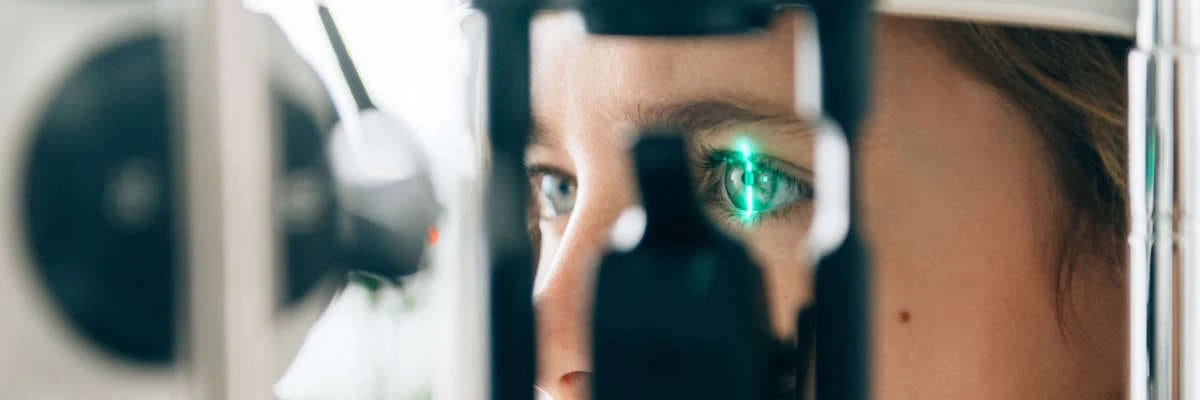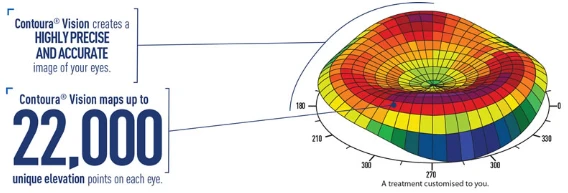The Truth About LASIK
personalEYES | 6 Jun 2019

Nobody would undergo any sort of eye surgery without knowing the facts.
Surely sight is our most precious sense but it is not always perfect. Creation is certainly an amazing thing and in a perfect world, there would be no faults.
The reality is however, that there can be problems, and through another miracle of sorts, man has been given the skills to correct many of these imperfections.
The focus of this feature is our eyes and what can be done to improve our vision. Millions of people wear glasses – we all know that. But there are now millions who don’t – thanks to laser vision correction. You won’t see them of course, as they have thrown away their spectacles and have re-joined the realms of the perfectly focussed population.
Glasses whilst a godsend to actually enable you to see, let’s face it, are a nuisance. They are expensive, can get lost, sat on, run over, need constant cleaning, or suddenly go out of fashion. They are often difficult for sportspeople and can restrict their abilities.
So they question remains: what can be done to correct eyesight?
Well plenty as is happens – but it is imperative to understand what is involved in any sort of corrective surgery.
WHAT’S THE FIX?
The state-of the art option for correcting near sightedness, far sightedness and astigmatism is Lasik laser surgery. It has been performed worldwide millions of times and is considered one of the safest most effective outcomes that surgery can achieve.
As a potential candidate, there is obviously a vision problem. But it is specifically your vision problem and will need to be dealt with accordingly. That is why it is incredibly important to be sure that you are well informed about any procedure you are considering undertaking.
A discussion with your ophthalmologist will explain the benefits and likely outcome of surgery as well as any potential risks or complications. These risks are absolutely minimal thanks to Lasik laser equipment which has negated the need for blade incisions.
HOW DOES IT WORK?
Do not underestimate the skill of the surgeon who performs this surgery. The Lasik procedure requires experienced hands to utilise this laser and effectively modify the corneal tissue.
Lasik surgery is performed using a laser programmed to remove a defined amount of tissue from the cornea. With each pulse of the laser beam a tiny amount of tissue will be removed. The areas of the cornea that need reshaping would be carefully evaluated before surgery. An ingenuous piece of technology called Wavefront-guided actually proves 3D feed back to the surgeon as they operate providing great accuracy of measurement and outcome.
HOW DO I CHOOSE A SURGEON?
Check out the biogs of the surgeons at personalEYES if you are looking for experience and industry expertise. They are cutting (or should that be laser) edge in their speciality field and will give an honest assessment of your visual needs.
Each patient will have a unique problem and this will be treated accordingly. It is definitely not ”one-size-fits-all” surgery. Eyes are way too important for that!
Not all people who have vision problems are potential candidates for Lasik. Certain severe cases of refractive errors may require quite different treatments, but this is something only a skilled, ethical ophthalmologist can advise on. There are also general health conditions that might rule out the option of Lasik surgery like diabetes, autoimmune diseases, retinal diseases and eye injuries but alternatives are available.
WHAT DOES IT FEEL LIKE?
The thought of having someone poking around in your eye is daunting – if not terrifying. But fear not. The patient is oblivious. Sort of awake – but not really.
This writer has actually watched a cataract being removed and the patient was in a happy, dozy place for the few minutes it took, and could walk out of the room afterwards. Most people have no memory of the surgery at all. Recovery is rapid and there may be some initial blurred vision and eye drops will be required. Vision will stabilise overnight. Job done.
Check-ups will follow with your surgeon and your new glasses-free life begins.
For further information about personalEYES and their services, please contact us.



